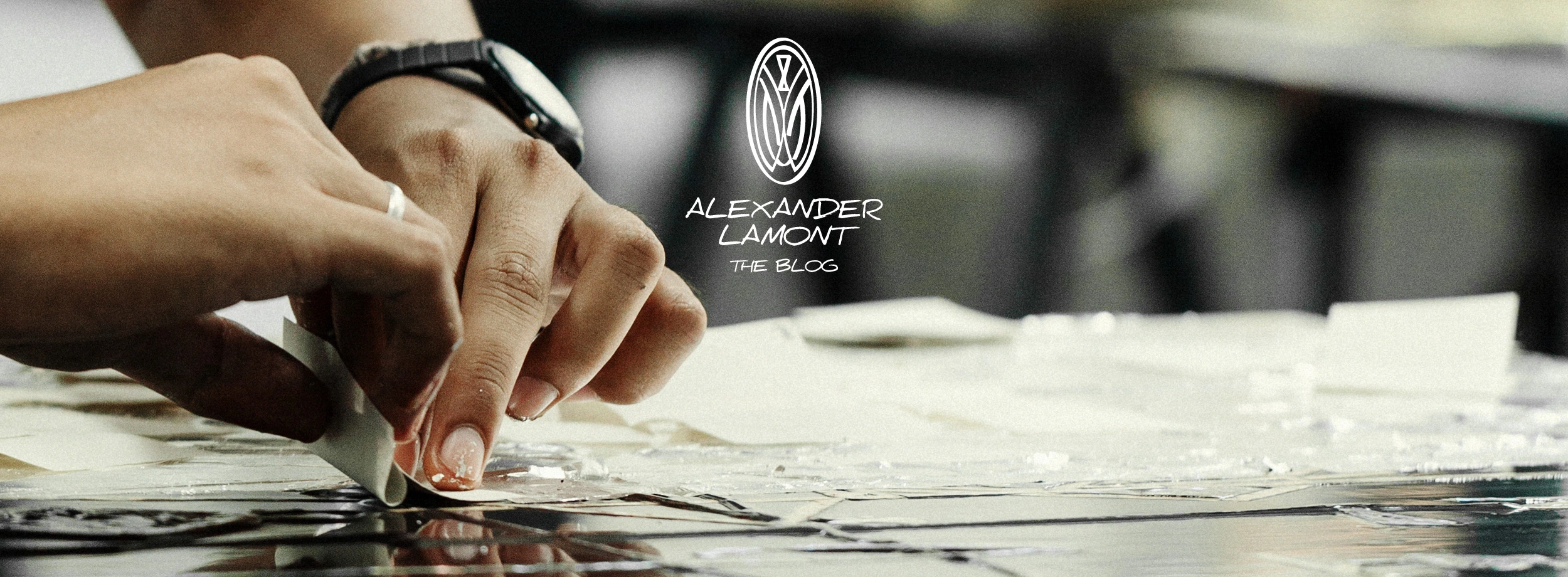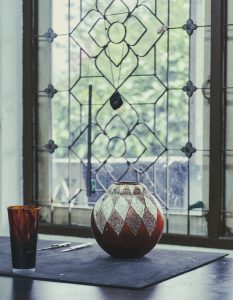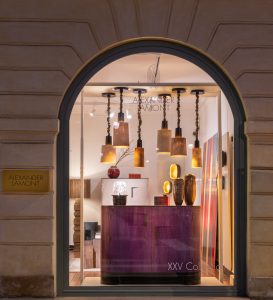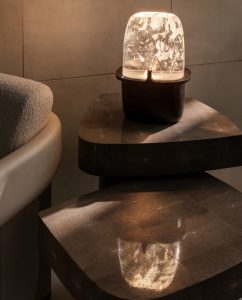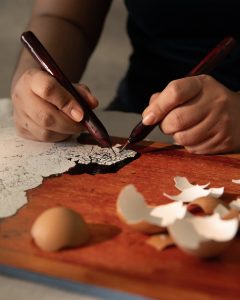Between 2009 and 2012, we were privileged to have lacquer master, Eric Stocker, in the workshop, training our artisans and producing our pieces using the techniques of natural lacquerware and gesso work. The meeting between Eric’s lifetime of experience in lacquer and gilding and my own search for precious materials resulted in the development of some very beautiful and innovative new finishes.
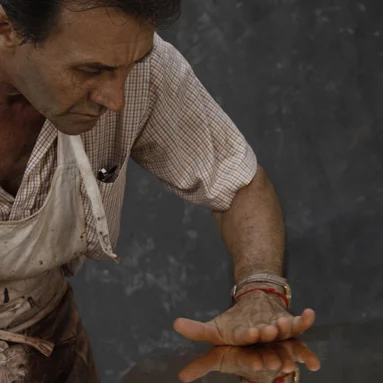
Eric comes from a long line of artisans. His Austrian great grandfather was a master of mosaic who came to France in the late 1800s on the wave of the Art Nouveau fashion of that period. His grandfather continued the mosaic work of his father decorating the shop fronts of the now preserved Art Nouveau buildings of Nantes in Brittany. Eric’s father became a master in gilding and gesso work, and his family became the foremost gilding artisans in France. Eric grew up in Brittany surrounded by the art collections of his ancestors. As a young teenager Eric worked as his father’s apprentice in the family’s gilding workshop, but then at the age of 16 he was drawn to Paris, to the lively artists’ quarter of Montparnasse, where he entered the lacquer atelier of Pierre Bobot.
Pierre Bobot was then 74 years old and had worked with the iconic designers and lacquer artists of the 1920s, most notably Jean Dunand and Eileen Gray. Eric was lucky enough during the first six months of his apprenticeship to meet Eileen Grey in her apartment on rue Bonaparte. He had gone there with Mr Bobot to collect her 1922 screen for restoration. This was 1974, and Eileen Grey was 96 years old. She died two years later on 31 October 1976. Eric assisted Mr Bobot, learning how to mix pigments, make the special animal glues, attend to the care of brushes and other instruments. It was also his job to sweep the floors and keep the atelier in order. Eric was one of the last lacquer artists in Europe to learn his craft in the traditional way through an apprenticeship under a Master. This thorough training stood him in particularly good stead for what he was destined to do in Asia in the future.
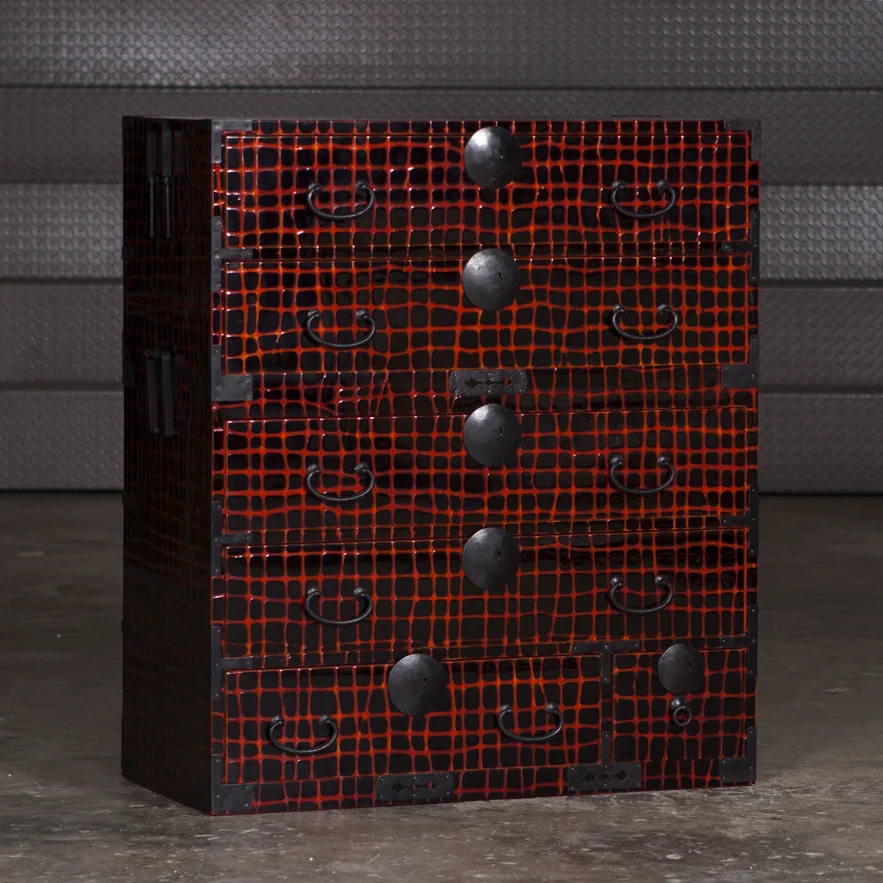
A one-of-a-kind tansu that Eric and Alexander created with gesso and natural lacquer.
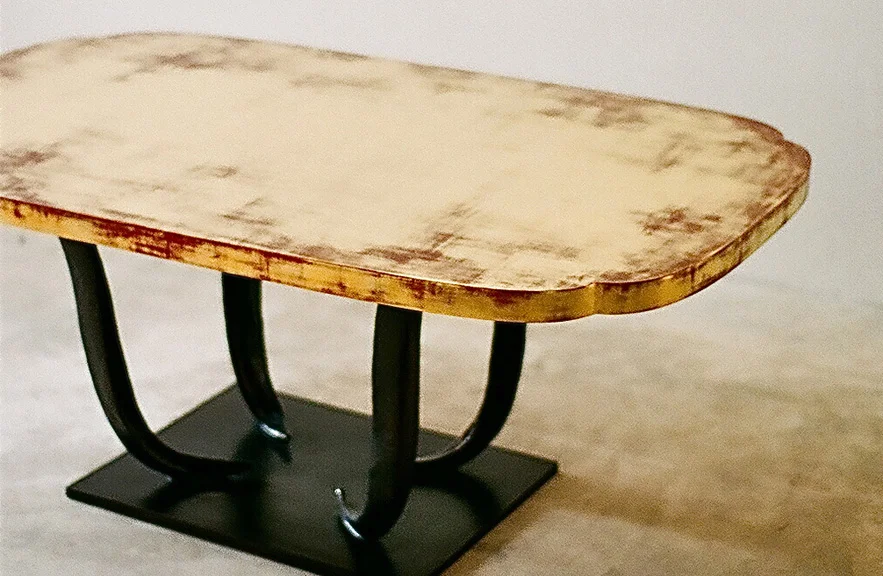
The Fourgere dining table finished with Calligrapher’s lacquer.
After finishing his apprenticeship, Eric lived for a number of years in the Southwest French town of Lot et Garonne. He spent months at a time in relative isolation restoring the gilded tabernacles and pillars of the churches of the Pyrenees villages along the St Jacques de Compostelle pilgrimage route. But he also continued to learn and expand his skills, working with Patrick Betaudier, an artist and art historian from Chicago who had relocated to Lot et Garonne. Patrick specialized in the chiaroscuro and oil glazing techniques of the great 15th and 16th Century painters such as Caravaggio.
Eric had always wanted to travel to the home of lacquer – Southeast Asia – to find the source of the material that he had worked with his whole life. He looked for a position in a lacquer tree plantation in Vietnam, but the visa restrictions for freelance workers were too difficult at that time. Then in 1997 Eric was invited by the European Union to go to Cambodia to run a project assisting in the revival of the troubled country’s artistic and artisanal skills. A large part of this project would be dedicated to lacquer, and Eric was asked to set up a school to train local people in lacquer and gilding skills. Eric arrived in Siem Riep, Cambodia, in 1998 to begin his Asian sojourn. He soon realized that in Cambodia he would have to set up his lacquer training school completely from scratch; making his own tools, sourcing the pigments, making his own glues and traveling beyond the army checkpoints that were common in Cambodia at the time to search for lacquer trees and plantations. This is where his thorough apprenticeship training proved to be invaluable as he knew exactly what tools were required and why they needed to be of a certain form, shape or weight. Indeed, he still uses a tool today that he fashioned himself from an old motorbike carburetor. During his twelve years in Cambodia Eric trained 350 lacquer, gilding and gesso workers of whom 12 became highly skilled artisans in this field.
In joining Alexander Lamont in 2009, Eric found a place that shared his vision for innovation while deeply respecting the traditions and skills achieved over generations of patient application by past artisans. Under one roof he was able to work with masters of shagreen, parchment, gilding and straw marquetry – the core precious materials of the great Twentieth Century decorators.

